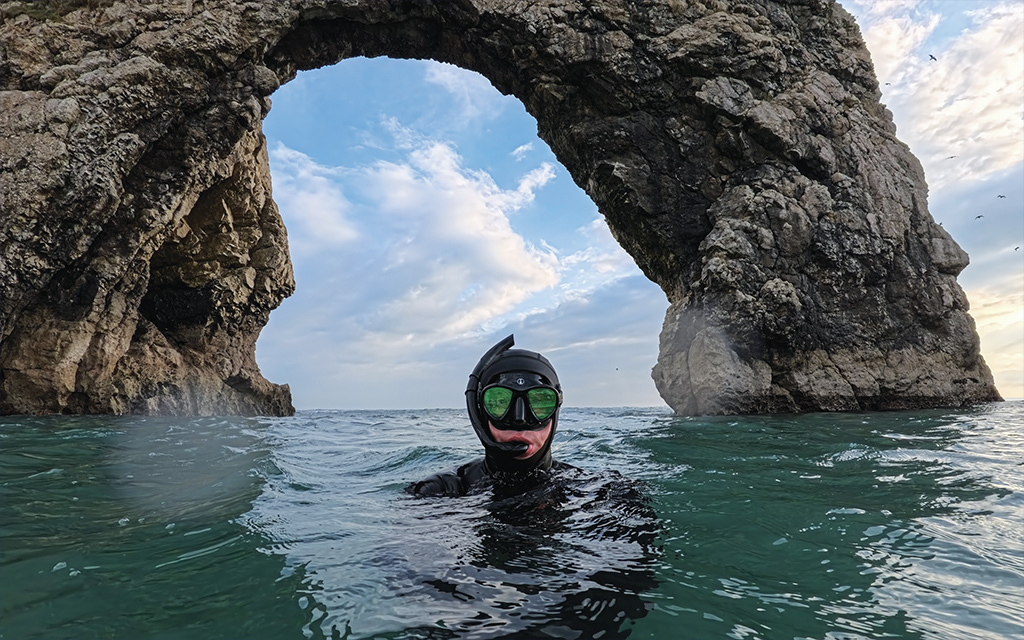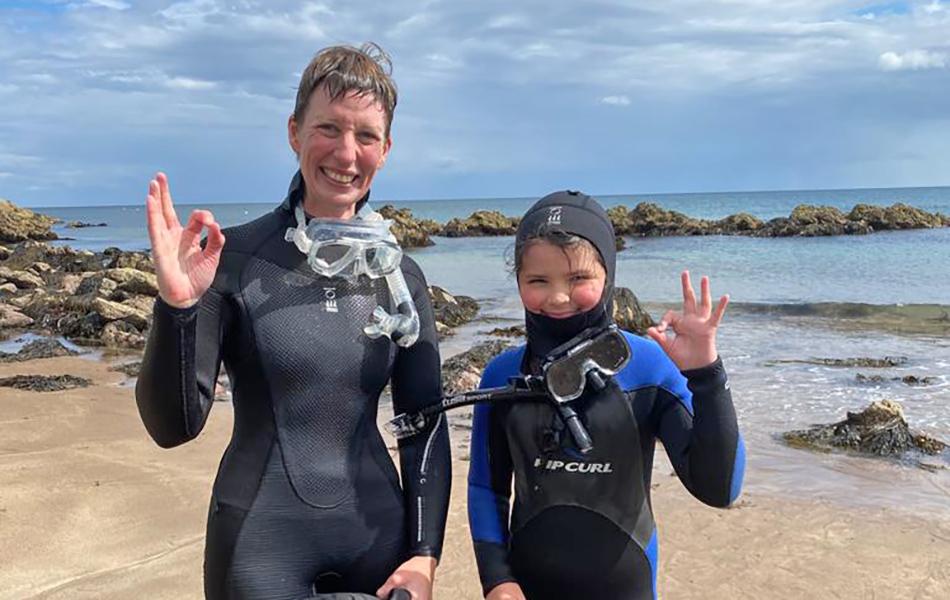
Photo credit: Andy Torbet
Andy Torbet visits one of the Jurassic Coast’s celebrated natural landmarks, and finds that visibility is a secondary concern.
Scuba divers immerse themselves both literally and figuratively in the subsurface world. The ‘other’ world – the world above – could be enveloped by magic purple mist or war could break out and we’d be oblivious until we’d cleared our deco. By contrast, snorkelling, the most basic discipline in the many faceted world of diving, retains a greater sense of connection with the terrestrial world.
Snorkelling, by its very nature, is conducted in that boundary layer. For divers, when diving, the world above does not exist. For those trapped on land the world appears to simply end at the waterline. But it is the humble snorkeller alone who bridges the gap, with one fin in either realm. This means we can appreciate the wonder of both worlds, an ability unobtainable by others. This means the topside attractions, be it landscape, history or wildlife can be just as important as that beneath us. And sometimes snorkelling gives us access to terrestrial locations and points of view unachievable by others.
The primary purpose of snorkelling is to see the underwater realm... it can also give us access to terrestrial sights out of reach of the others
Which is probably just as well since I have found my ability to see the incredible underwater landscapes, histories and wildlife of Britain’s marine environs to be, on occasion, somewhat restricted. Such was the case recently when I made my first ever trip to the UK’s most famous natural arch... Durdle Door.
Durdle Door is a natural limestone arch located on Dorset’s Jurassic Coast. The arch is 61 metres high and 30 metres feet wide.
Once again the lightweight nature of snorkelling proved its worth. The walk from the car park (warning – not cheap) is further than I’d anticipated and I’d certainly think twice about the walk back up the steep hill with full dive kit. I’d arrived just before sunset so had little time to wonder at the geological architecture from dry land and waded straight out to sea.
As the day drew on, the beach was not too crowded but I still looked forward to escaping into the empty sea. I saw immediately that my hope for some early spring good fortune in the shape of clear waters was a loss. It was barely half a metre and if the submerged area had been the only attraction I would be regretting the effort yet to come on the traipse back to the car.
However, in the last rays of sunshine I finned out the arch to float beneath it. I’d seen many people, on the beach, on the cliffs, on the path, taking photos of the archway. But none had the intimate view from this close as it towered above me, extending out of the water. The surge pushed and pulled me through the archway to look at it from the other side, the setting sun to one side, just outside the aperture. I spent some time duck-diving into the murky waters beneath the rock-crescent. Poor visibility needn’t be a complete show-stopper if you’re willing to get closer. In fact, the forced proximity to the kelp and rock habitats can often focus our attention and we can sometimes see more than we would have had in better conditions, cruising over the site oblivious to its detail. There were the species one would expect, snakelocks anemones, velvet swimming crabs and ballan wrasse but it was upon surfacing, with my attention immediately back on the arch, I knew what the main reward on this snorkel was.
The primary purpose of snorkelling is to see the underwater realm. But we should not forget it can, as we span the wet and dry worlds, also give us access to terrestrial sights out of reach of the others.
Go snorkelling!
Learn more on snorkelling with BSAC. Looking to introduce snorkelling into your club? Find out more at bsac.com/snorkellinginstructor
Article ‘The Door of perception’ by Any Torbet first published in SCUBA magazine, Issue 156 June 2025. Images in this online version may have been substituted from the original images in SCUBA magazine due to usage rights.

 Author: Andy Torbet | Posted 27 Jun 2025
Author: Andy Torbet | Posted 27 Jun 2025



